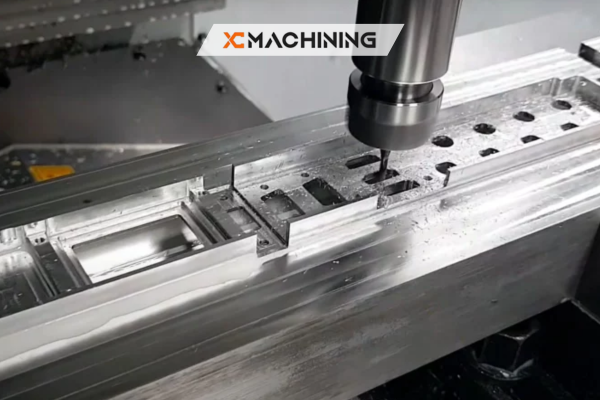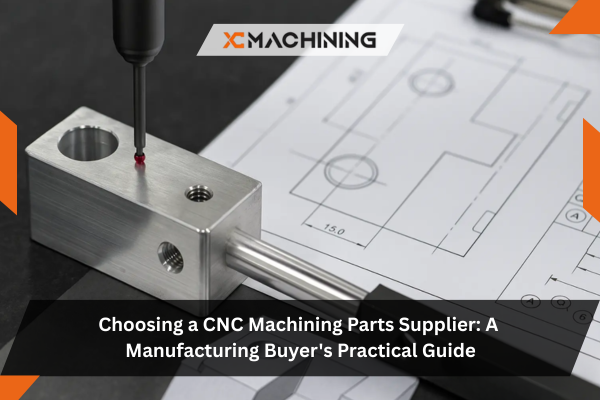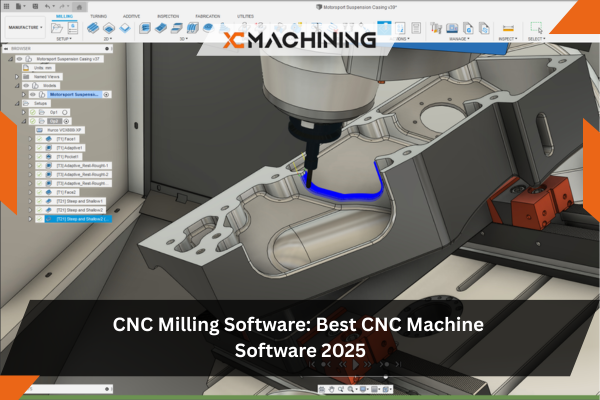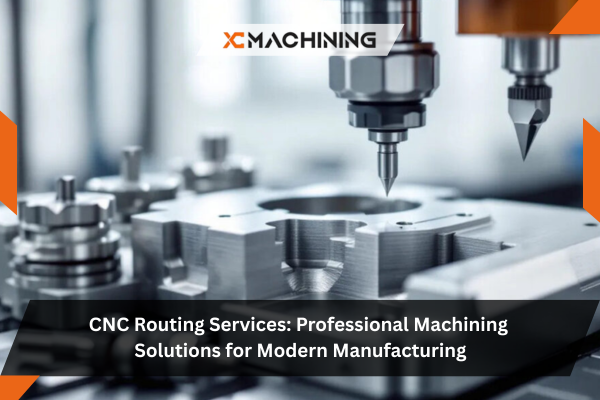Introduction
Finding the right CNC machining parts supplier affects everything from product quality to delivery schedules. Manufacturing teams know this challenge well—one wrong choice can delay production by weeks or compromise part specifications that took months to finalize.
The global CNC machine market hit $95.29 billion in 2024 and experts project it will reach $195.59 billion by 2032. This growth brings more options but also more complexity when selecting partners. Buyers now face thousands of potential suppliers, each claiming superior capabilities.
What really matters when evaluating a CNC machining supplier? This guide cuts through marketing claims to focus on practical selection criteria based on real manufacturing scenarios. You’ll learn which certifications actually matter, how to spot quality red flags, and what questions reveal a supplier’s true capabilities.
What Separates Professional CNC Machining Suppliers from the Rest
Walking into any machine shop reveals basic equipment. Professional Pièces d'usinage CNC manufacturers demonstrate something different—systematic approaches to quality and documented expertise across challenging projects.
Equipment That Matches Modern Requirements
Multi-axis capabilities define contemporary machining. A recent aerospace components manufacturer discovered this when their previous 3-axis supplier couldn’t handle a new wing bracket design. After switching to a 5-axis equipped CNC machining service provider, their production time dropped 40% because the part could be completed in one setup instead of four.
Five-axis machines cost significantly more than three-axis equipment. Suppliers making this investment typically handle more complex work and maintain tighter tolerances. Swiss-type lathes for medical device pins, high-speed mills for aluminum aerospace housings, and turning centers for shaft work all indicate specialized capabilities.
Equipment age matters too. Machines manufactured after 2018 generally incorporate better thermal management and control systems. Ask about maintenance schedules—professional shops document all preventive maintenance and calibration activities.
Material Knowledge That Prevents Problems
A medical device company learned about material expertise the hard way. Their drawings specified “stainless steel” without calling out a specific grade. The supplier used 303 stainless (chosen for easy machining) instead of 316L (required for biocompatibility). The entire batch failed inspection.
Expérimenté CNC machining parts suppliers ask clarifying questions. They understand that 6061 aluminum works well for general applications but aerospace customers often need 7075 for strength. They know titanium requires different cutting speeds than steel, and that brass machines faster than stainless but can’t handle the same stress levels.
Material versatility tells you something important. Suppliers working with only aluminum or only steel likely haven’t developed the breadth of process knowledge valuable for future projects. XC Machining processes everything from aluminum alloys and stainless steels to titanium, brass, and engineering plastics, ensuring we can support design changes without finding new partners.

Industry Experience Reduces Learning Curves
An automotive parts buyer once shared a telling story. His company sent identical drawings to three suppliers. Only one came back with questions about operating temperature and whether the part needed PPAP documentation. That supplier had automotive industry experience—the others treated it like a generic component.
Suppliers who’ve worked in your industry speak your language. They understand that:
- Aerospace needs material certifications traceable to the mill
- Medical devices require cleanroom assembly and biocompatibility documentation
- Automotive production demands PPAP packages and ongoing Cpk studies
- Electronics housings need tight tolerances for mounting features
- Industrial equipment emphasizes durability over surface finish
Quality Systems Worth Your Time to Verify
Certifications hanging in a reception area don’t guarantee quality parts. Understanding what those certificates actually mean helps separate marketing from capability.
ISO 9001 Forms the Foundation
Over one million organizations worldwide hold ISO 9001:2015 certification. This makes it the baseline—if a CNC machining supplier doesn’t have it, they’re operating outside accepted manufacturing standards.
ISO 9001 requires documented procedures for process control, corrective actions, internal audits, and customer feedback. More importantly, third-party auditors verify these systems annually. A supplier can claim quality focus, but ISO certification means someone checked.
XC Machining maintains current ISO 9001:2015 certification with annual surveillance audits. We treat the standard as our operational minimum, not a marketing tool.
Specialized Certifications Signal Capability
A defense contractor needed AS9100D certification for their supplier. Why? Because AS9100 adds aviation-specific requirements: configuration management, first article inspection protocols, and enhanced risk assessment. Regular ISO 9001 doesn’t cover these aerospace essentials.
Similarly, medical device manufacturers need ISO 13485 from their Pièces d'usinage CNC suppliers. This standard includes design controls, sterilization validation, and traceability systems that protect patient safety. An electronics manufacturer once told me their FDA audit failed partly because their machining supplier couldn’t provide adequate component traceability.
Automotive customers look for IATF 16949, which combines ISO 9001 with automotive-specific requirements for defect prevention and supply chain management.
Ask to see current certificates. Check the accreditation body—legitimate certifications come from recognized organizations like BSI, TUV, or ANAB. Certificates should show issue dates, scope coverage, and next audit schedules.
Inspection Equipment That Backs Up Claims
Claiming ±0.001″ tolerances means nothing without measurement equipment that can verify them. Coordinate Measuring Machines (CMM) measure three-dimensional accuracy at micron levels. Optical comparators check profiles against drawings. Surface finish testers quantify Ra values objectively.
But equipment alone isn’t enough. Calibration matters. All measurement tools need regular calibration traceable to national standards. Professional suppliers provide calibration certificates on request and maintain detailed calibration schedules.
During facility tours (highly recommended before major commitments), look at the measurement equipment condition. Dusty, neglected inspection tools suggest quality takes a backseat to throughput.
Understanding CNC Machining Service Capabilities
Not every shop can handle every project. Matching supplier capabilities to your specific needs prevents disappointment later.
Core Machining Processes
Tournage CNC rotates workpieces against cutting tools to create cylindrical parts—shafts, bushings, threaded components. A manufacturer of hydraulic cylinders saved 30% by consolidating three operations (rough turn, finish turn, thread cutting) with a single CNC machining service provider equipped for complete turning operations. Typical lead times run 5-10 business days for standard parts.
Fraisage CNC uses rotating cutters to remove material and create flat surfaces, pockets, complex contours. Brackets, housings, and fixtures with multiple features benefit from milling. A robotics company discovered that milling complex aluminum housings cost less than fabricating them from sheet metal once quantities exceeded 50 pieces.
Usinage multiaxe combines operations without repositioning parts. The real value shows up in complex geometries. An aerospace customer needed a titanium bracket with features on five surfaces. Multi-axis machining completed it in one setup versus four setups with a 3-axis mill—reducing both time and the opportunity for positioning errors between operations.
Secondary Services That Simplify Sourcing
Complete CNC machining suppliers offer finishing operations: heat treatment for material property improvements, surface coatings like anodizing or powder coating, deburring to specified surface textures, and assembly of multiple components.
One electronics manufacturer described vendor consolidation benefits: “Previously we sent machined parts to three different finishers depending on coating type. Our current supplier handles everything. We cut our vendor management time by 60% and eliminated two potential points of delay.”
At XC Machining, we provide comprehensive secondary services including multiple surface treatment options, assembly capabilities, and complete quality documentation. This integrated approach reduces your coordination workload and shortens overall project timelines.

Practical Factors That Impact Your Decision
Technical capabilities matter, but several practical considerations significantly affect working relationships.
Communication Patterns Predict Performance
Time zones and language proficiency seem minor until you need a rush prototype or have a technical question about tolerance interpretation. Domestic suppliers typically respond during your business hours. International partners might require scheduled calls or accept next-day email responses.
A product development manager told me about specification confusion with an overseas supplier: “We specified 0.005″ tolerance on a hole diameter. They interpreted it as ±0.005″ total (±0.0025″ from nominal). We meant ±0.005″ from nominal. The language barrier made clarification difficult, and we lost two weeks to rework.”
Test communication quality during quoting. How quickly do responses arrive? Do suppliers ask clarifying questions? Can you reach technical staff directly, or does everything filter through sales?
Production Capacity Affects Reliability
A CNC machining parts supplier running at 95% capacity will struggle with your rush order. They’ll also have limited flexibility for volume increases. Conversely, shops with excessive open capacity might indicate quality or delivery problems causing customer losses.
Ask about current workload and typical lead times:
| Quantity Type | Expected Timeframe |
| Prototypes (1-10 pieces) | 1-2 weeks |
| Small production (25-100) | 2-3 weeks |
| Medium volume (500-1000) | 3-4 weeks |
| Large volume production | Project-specific quotes |
Understand expedite capabilities and costs. Most suppliers offer rush services at premium pricing—usually 50-100% above standard rates. Knowing this helps with contingency planning.
Total Cost Exceeds Part Price
Part pricing represents only 55-65% of total project cost. A purchasing manager shared his analysis after switching from the lowest-price supplier to a moderately higher-priced option:
“The cheap supplier’s parts cost 15% less per piece. But we had 8% scrap rate due to quality issues, two-week longer lead times forced expedited shipping three times, and their engineering support was non-existent so our team spent extra time detailing obvious features. Total cost was actually 12% higher with the ‘cheap’ supplier.”
Consider shipping costs, quality consistency, documentation support, and engineering assistance when evaluating true value. XC Machining’s transparent pricing includes detailed breakdowns showing material, machining, finishing, and delivery costs separately—no surprises later.
Local or International: Making the Geographic Choice
Geography introduces trade-offs that affect different projects differently.
Regional Suppliers Offer Certain Advantages
Real-time communication during business hours solves problems faster. One product engineer described debugging a fit issue: “We had a three-way call with our local CNC machining supplier and assembly team. We identified the problem and agreed on the fix in 45 minutes. With our overseas supplier, that would’ve taken three days of email exchanges.”
Facility visits build confidence. Seeing equipment condition, meeting machinists, and observing quality practices firsthand reveals capabilities that specifications can’t capture. Shorter shipping distances mean faster delivery and lower freight costs.
Intellectual property protection tends to be stronger domestically. Legal recourse exists if problems arise. Payment terms are simpler without international banking complications.
Regional suppliers work well for prototypes needing design iteration, complex parts requiring frequent technical discussion, time-sensitive projects, or small to medium production quantities where cost advantages don’t outweigh convenience.
International Partners Bring Different Value
Cost differences can be substantial. According to 2024 manufacturing data, companies report 30-50% savings through international sourcing, particularly from established manufacturing regions. Labor costs explain much of this—CNC operators in China earn $8-10 hourly versus $25-30 in the United States.
High manufacturing capacity supports large volumes. A consumer products company moved production overseas after their domestic CNC machining parts supplier couldn’t scale beyond 5,000 pieces monthly. Their international partner handled 50,000 pieces with room to grow.
The downside? Time zone coordination requires planning. A 12-hour difference means limited overlap for real-time conversations. International shipping adds 2-4 weeks via ocean freight (air freight closes this gap but costs significantly more). Quality oversight needs more robust agreements and inspection protocols.
International suppliers work best for stable designs with clear specifications, cost-sensitive projects, high-volume production, or when specific capabilities aren’t available locally.
Combining Both Approaches
Smart manufacturers use both. They partner with regional suppliers for development, prototypes, and complex new parts. Once designs stabilize and volumes increase, they transition proven parts to international partners for cost efficiency.
This balanced strategy maintains flexibility while optimizing costs. XC Machining serves clients using this hybrid model, providing rapid prototyping and development support domestically while coordinating higher-volume production through our international network when appropriate.
Mistakes That Cost Time and Money
Learning from others’ errors beats making your own. Here are problems that repeatedly trip up buyers.
Choosing Based Only on Price: The purchasing manager at a medical device company authorized a supplier change to save $1.80 per part. Within three months, quality issues forced them back to the original supplier. The switch cost $47,000 in scrap, requalification testing, and delayed shipments. She now evaluates total value, not just unit price.
Skipping Sample Evaluation: A product designer sent production orders after seeing photos of sample parts. The photos looked good, but actual samples revealed burrs on internal features and surface roughness exceeding specifications. Photos can’t replace physical inspection.
Vague Specifications: Drawings showing only key dimensions without tolerances, surface finish callouts, or material grades invite misunderstandings. A CNC machining supplier will make assumptions—probably different from yours. Complete specifications prevent expensive interpretations.
Single-Source Dependency: An automotive supplier learned this lesson during the 2024 equipment shortage. Their sole supplier’s CNC machine broke down, halting production for three weeks. No backup meant no parts. The contract they lost was worth significantly more than the cost of qualifying a second supplier.
Ignoring Cultural Fit: Technical capabilities matter, but working relationships matter too. Suppliers who communicate proactively, accept feedback constructively, and demonstrate flexibility adapt better to changing needs than those focused purely on transactions.
How to Evaluate Suppliers Systematically
A structured approach produces better outcomes than informal selection.
Start With Clear Requirements: Document part specifications including dimensions, tolerances, materials, surface finishes, and acceptance criteria. Add volume projections, timeline expectations, budget parameters, and any special certifications needed. The clearer your requirements, the more accurate supplier responses become.
Research Potential Partners: Industry directories, trade show contacts, and professional referrals help identify candidates. Prioritize CNC machining parts suppliers with relevant industry experience and appropriate scale for your volumes. XC Machining’s client base spans aerospace, medical devices, automotive, electronics, and industrial equipment—giving us broad perspective on different industry requirements.
Request Detailed Quotations: Ask for itemized pricing showing material costs, machining time, finishing operations, and shipping separately. Comprehensive quotes enable meaningful comparisons. Beware of quotes that seem too detailed too fast—accurate estimates require time for engineering review.
Evaluate Physical Samples: Request 2-3 sample parts if feasible. Inspect dimensional accuracy with your own measurement tools, assess surface finish quality, and check overall workmanship. Samples reveal actual capabilities more reliably than specifications alone.
Check References and Certifications: Request current ISO certificates and contact previous customers. Ask references about quality consistency, delivery performance, communication effectiveness, and problem-solving approaches. Third-party validation confirms claimed capabilities.
Conduct Facility Audits When Practical: For major suppliers representing significant business, on-site visits assess equipment condition, housekeeping standards, quality control practices, and overall operational maturity. Virtual tours help when travel isn’t feasible, though they reveal less than in-person audits.
Understanding Costs and Timelines
Realistic expectations prevent frustration and enable better planning.
What Drives Part Costs
Material represents 25-35% of typical machining costs based on current market rates. Aluminum 6061 costs about $3-5 per pound, stainless steel 304 runs $2-4 per pound, while titanium Grade 5 reaches $15-30 per pound. Complex geometries waste more material during machining, increasing this cost component.
Machine time constitutes 35-45% of costs. Part complexity, required tolerances, and surface finish specifications all affect machining duration. A simple aluminum bracket might take 15 minutes per piece while a complex titanium aerospace component could require 4 hours.
Setup time gets amortized across quantities. Programming, tool selection, and machine preparation for a 100-piece run costs the same as for a 10-piece run, making larger quantities more economical per piece.
Volume Economics
| Order Quantity | Cost Per Part Range |
| 1-5 pieces | $200-400 |
| 10-25 pieces | $100-200 |
| 50-100 pieces | $40-90 |
| 500+ pieces | $20-50 |
| 5,000+ pieces | $10-30 |
These ranges vary significantly based on part size, complexity, material, and tolerance requirements. Use them for planning estimates, not firm budgets. XC Machining provides detailed quotes based on your specific drawings and requirements.
Questions That Reveal Supplier Capabilities
Thorough interviews separate marketing from reality.
“What types of CNC equipment do you operate, and what’s the vintage of your machines?” Modern equipment offers better repeatability. Aging machines struggle with tight tolerances or complex geometries. Follow-up: “How often do you invest in new equipment?” Regular capital investment indicates commitment to capability advancement.
“Which industries do you primarily serve, and can you provide example parts?” Industry focus indicates relevant experience. Example parts demonstrate actual capability versus claimed capability.
“What quality certifications do you maintain, and when was your last audit?” Current certificates from accredited bodies verify ongoing compliance. Ask to see actual certificates—expired certifications or those from unknown bodies raise concerns.
“Walk me through your first article inspection and production quality check processes.” Documented inspection procedures with objective measurements provide confidence. Vague answers suggest ad-hoc quality practices.
“What’s your typical lead time for parts like mine, and what expedite options exist?” Understanding normal timeframes helps production planning. Knowing rush capabilities and costs prepares you for contingencies.
“Can you provide three customer references, including at least one in my industry?” Speaking with current clients reveals real-world performance. Ask references about quality consistency, delivery reliability, communication quality, and problem-solving approaches.
“How do you handle non-conforming parts?” Clear corrective action procedures indicate professional operations. Defensive responses suggest potential problems. At XC Machining, we investigate root causes, implement corrections, and document everything—non-conformances become learning opportunities.
“What CAD formats do you accept, and do you provide design feedback?” CAD compatibility streamlines workflows. Engineering support prevents manufacturability issues. We review all new designs for manufacturability and provide feedback before production begins.
Conclusion
The right CNC machining parts supplier becomes more than a vendor—they become a manufacturing partner supporting your product success. With the global CNC market projected to nearly double by 2032, choices continue expanding.
Success comes from systematic evaluation: verify quality certifications, assess communication effectiveness, understand real capabilities through samples and references, and consider total value beyond initial pricing. Whether choosing regional partners for flexibility or international sources for volume economics, match supplier strengths to your specific project requirements.
At XC Machining, we’ve built our reputation on technical expertise, quality consistency, and responsive service across aerospace, medical, automotive, and industrial applications. Our ISO 9001:2015 certification and modern multi-axis equipment support everything from rapid prototyping to production volumes.
Manufacturing partnerships succeed when both parties understand requirements clearly and communicate openly. Take time to select carefully—the right choice affects product quality, delivery performance, and ultimately, customer satisfaction.
Questions fréquemment posées
What’s the typical lead time for CNC machined parts? Standard parts in prototype quantities (1-10 pieces) typically need 1-2 weeks. Production runs of 100+ pieces usually require 3-4 weeks depending on complexity. Most suppliers offer expedited services at 50-100% premium pricing for urgent requirements.
How do I verify a supplier’s quality certifications are legitimate? Request certificate copies showing issue dates, scope, and accreditation body logos. Verify the certifying organization (like BSI, TUV, or ANAB) and check that certificates haven’t expired. Legitimate auditors maintain public registries where you can confirm current certification status.
Should I use local or overseas CNC machining suppliers? It depends on your project. Local suppliers work better for prototypes requiring iteration, complex parts needing frequent technical discussion, and time-sensitive projects. Overseas partners often provide cost advantages for high-volume production of proven designs with stable specifications. Many manufacturers use both strategically.
What tolerance levels can CNC machining realistically achieve? Standard precision machining maintains ±0.005″ (0.127mm) reliably. Advanced operations achieve ±0.001″ (0.025mm) or tighter with appropriate equipment and inspection. Tighter tolerances increase cost and lead time—specify them only where functionally necessary.
How many suppliers should I qualify for critical components? Maintain at least two qualified sources for important parts. Equipment failures, capacity constraints, or quality issues at one supplier won’t halt production when alternatives exist. Qualifying backup suppliers costs money upfront but protects against significantly larger disruption costs later.
References
- Fortune Business Insights. (2024). “CNC Machine Market Size, Share & Industry Analysis.” Retrieved from https://www.fortunebusinessinsights.com/industry-reports/computer-numerical-controls-cnc-machine-tools-market-101707
- Grand View Research. (2024). “Computer Numerical Control Machines Market Report, 2030.” Retrieved from https://www.grandviewresearch.com/industry-analysis/computer-numerical-controls-cnc-market
- International Organization for Standardization. (2024). “ISO 9001:2015 Quality Management Systems — Requirements.” Retrieved from https://www.iso.org/standard/62085.html
- Fictiv Manufacturing. (2024). “The Future of CNC Machining 2024 and Beyond.” Retrieved from https://www.fictiv.com/articles/the-future-of-cnc-machining-2024-and-beyond
- Be-Cu Manufacturing. (2024). “CNC Machining Market Growth Analysis and Industry Trends.” Retrieved from https://be-cu.com/blog/cnc-machining-usa/
About XC Machining
XC Machining provides precision CNC machining services with ISO 9001:2015 certification and advanced multi-axis equipment. We serve aerospace, medical device, automotive, electronics, and industrial equipment manufacturers with comprehensive capabilities from prototyping through production volumes.





